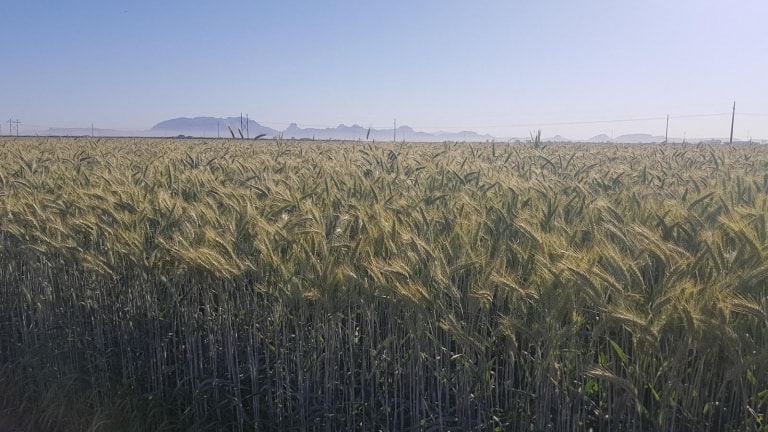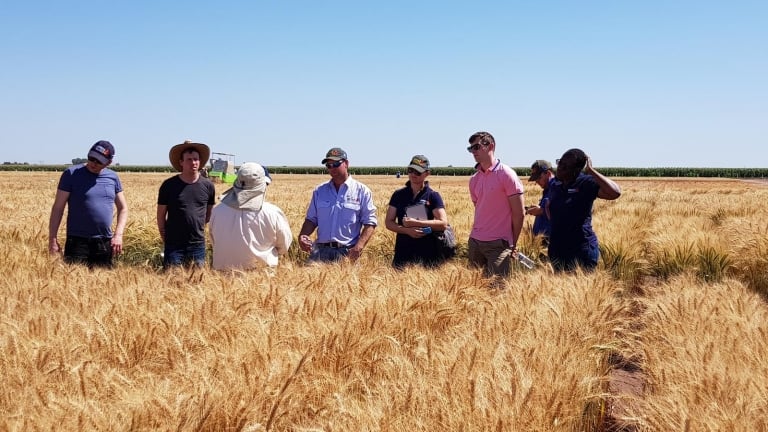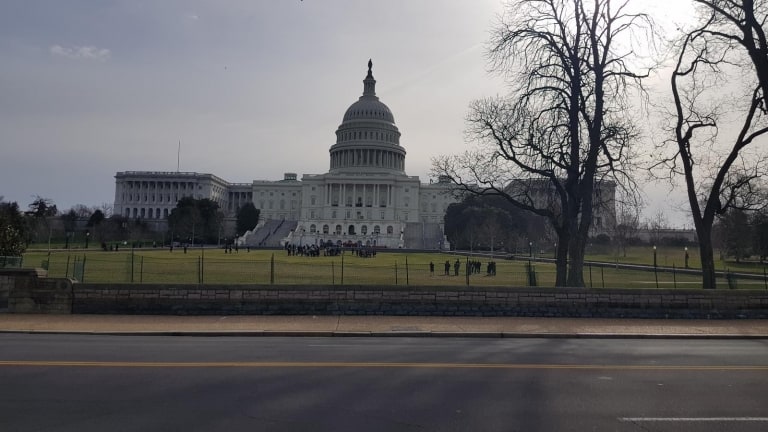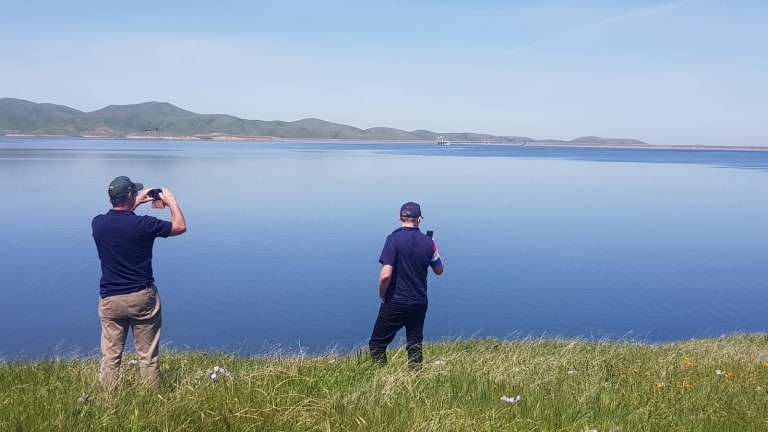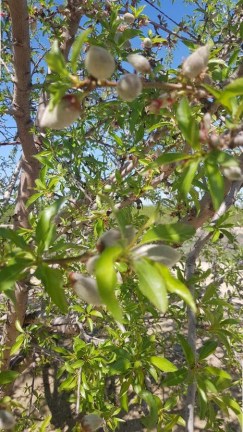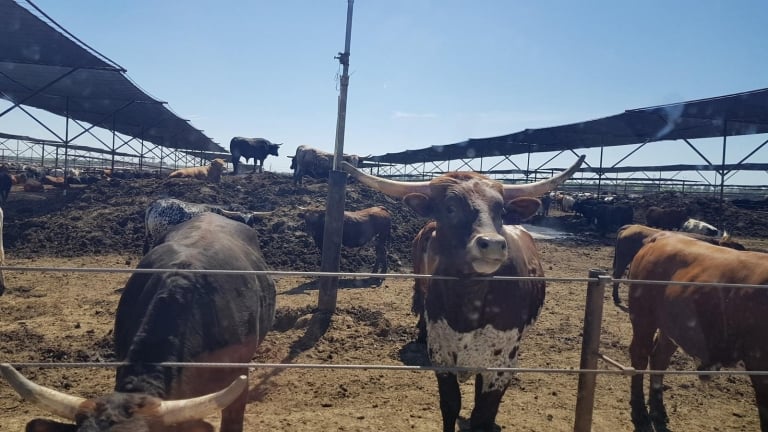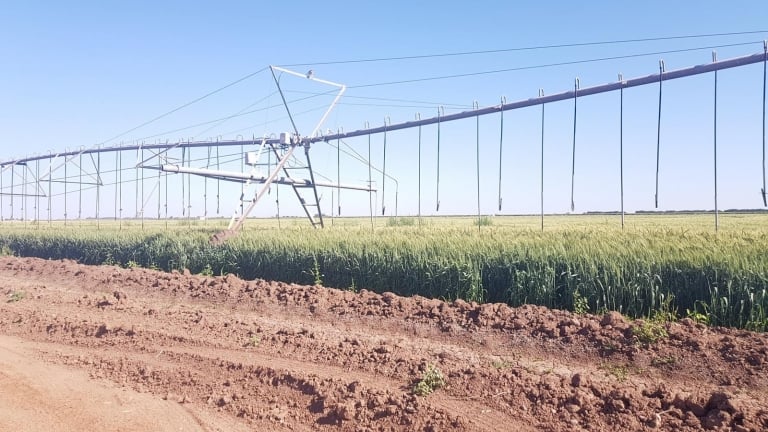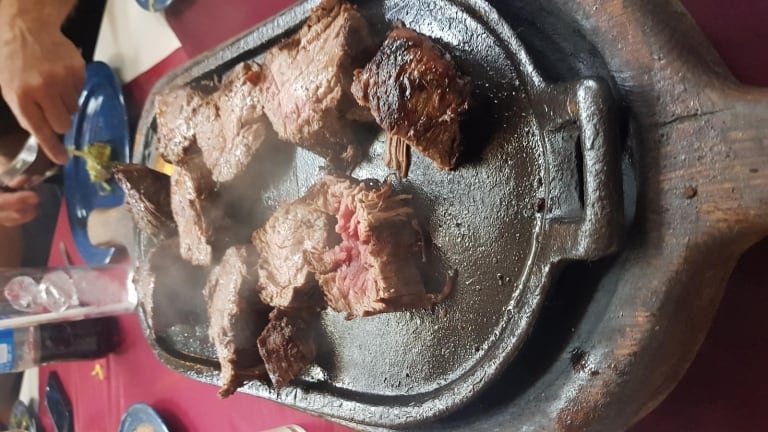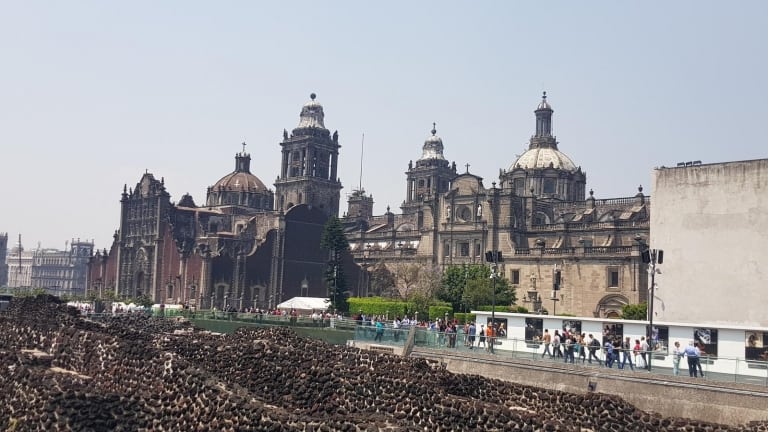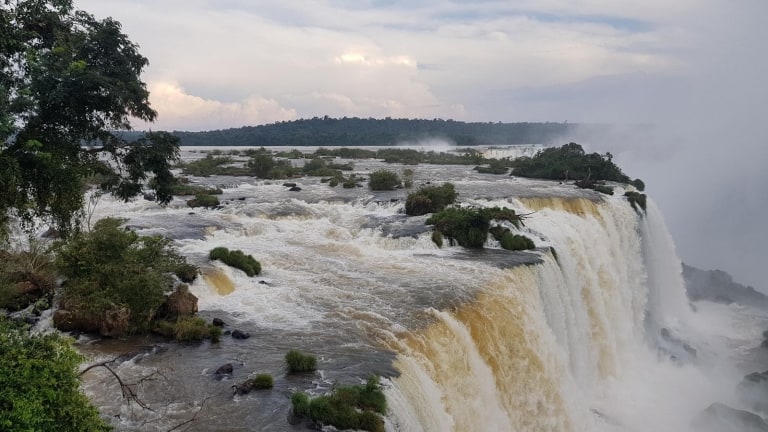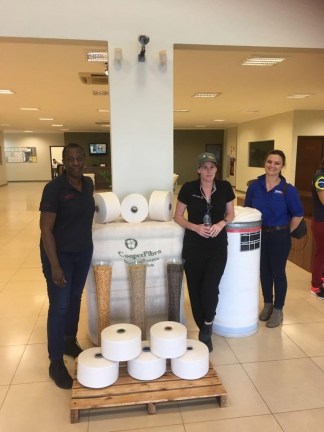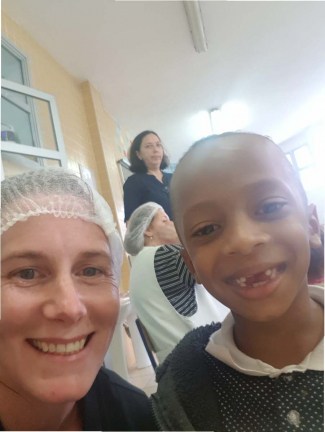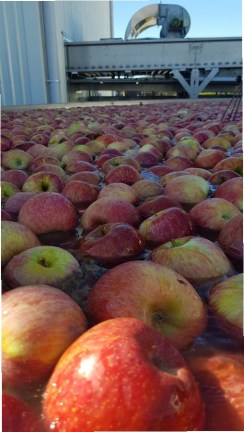BRAZIL GFP 2018
10 Nuffield Scholars, 6 Weeks, 5 Countries, 23 Flights, 78 Visits & Meetings
After a whirlwind start to “Nuffield 18” and having survived the Contemporary Scholars Conference in the Netherlands, it was time to set out on my GFP – by all previous accounts the sort of trip that legends are made from!
Our group was known as the Brazil group, who would be travelling to Ireland, the USA, Mexico, Brazil and New Zealand. The first stop on our GFP was Ireland. Despite it being a little on the snowy side for our arrival into Dublin late on the Sunday night following St Patricks day (whether that was by bad luck or design is another debate), it was great to finally be on the road for the start of our six-week journey.
It is also fair to say that despite the quiet excitement there was also some apprehension amongst the group, and our ability to survive the next few weeks together in such close quarters.
Ireland
During our trip through Ireland we travelled from Dublin, through to Kilkenny, onto Tipperary, Kilarney, Ballybunion, and back to Dublin in the space of a week. We saw beef farms, dairy farms, pig farms and equine farms. We met dairy companies, organic orchardists, cropping farmers, research scientists and Nuffield Scholars, and throughout I was struck by how positive those involved in Irish Agriculture were, especially on the back of what many were calling the wettest spring in history.
The opportunities in Ireland, particularly in the dairy sector are in my view significant, especially in terms of their ability to continue to improve efficiency and productivity. In recent years it would seem that this is being driven by the removal of milk quotas. A simple example during our visit with Teagasc (Irish equivalent of Ag Research) is the more recent development and focus on herd production and the introduction of herd testing, which is still not widespread in Ireland, however over the past 18 years since the economic breeding index program was developed, Irish dairy farmers have started to see the improvement in productivity of their animals, which they expect will continue to be taken up by more farmers.
It has also been interesting to gain an insight into the fact that as a general rule the Irish do not have a great exposure to debt within their farming enterprises. Many are not prepared to utilise debt for expansion, something which I have observed as being largely borne out of the fact that farms are not generally brought and sold externally and are usually passed to the eldest son, and that any development is funded out of cashflow. This was certainly a contrast to the way that farming growth is financed in New Zealand, and was something I saw as a significant difference between New Zealand and Ireland.
It will be interesting to see over the coming years whether there is any change to the way in which they fund development given the expected growth within the Irish dairy sector. One thing that become apparent to me when travelling through Ireland was that many Irish farmers have been exposed to the negative press that farming in New Zealand has been receiving. In particular with respect to water quality and the environment, and most, if not all, were of the opinion that farmers in Ireland were not held in the same “low” regard by their public.
This was something that was discussed in depth when I had the opportunity to participate in a Nuffield Ireland debate on “Fake News & Agriculture”.
On the flip side however, it seems that the animal welfare debate and the “rise of militant veganism” was something that was causing concern to the agriculture sector in Ireland, that I am not seeing to the same extent here in New Zealand.
“That frog was right…it isn’t easy being green” – Anon
United States
The second phase of our trip was the USA. Here we had the opportunity to meet up with the Chile and Africa GFP Groups in Washington DC before continuing onto California.
Our first day in Washington DC was filled with a range of different briefings. Some of the more interesting observations for me were the comments from the American Farm Bureau (AFB) around the desire to foster innovation on farms, which they saw as being constrained by heavy regulatory requirements.
It was also interesting to hear that agriculture is still very influential in the policy space and that their farmer members are very closely engaged in the policy process compared to many other sectors. Accordingly they probably had a greater voice compared to farmers in other agricultural nations, where farmers make up a very small percentage of the voting public.
The importance of lobby groups was also something that stood out for me, as they appear to be far more active in the US than I observed elsewhere during the GFP.
The comments made by Matt Perdue (National Farmers Union) had a familiarity, in terms of seeing consolidation of farms and the corporatisation of farms as profitability of smaller farming units reduced.
I was also surprised by the comments that his farming members saw climate change as a big issue, and that they were individually seeing climate change affecting their farming businesses. I felt however that there was a lot of push to enable self-regulation, but not much talk around how this would be seen to be achieving the desired results.
It was also surprising to hear that internally the US agriculture sector may not be as supportive of Trump policies, especially in the trade space as is perhaps publicly portrayed.
In terms of emerging trends in Ag, there was a lot of focus on GMO and gene editing, with much commentary around how farmers saw Precision Ag as a pathway for navigating the changing regulatory environment. A highlight from the briefing by the USDA was learning about the USDA small business innovation grants program, which has been set up with the purpose of de-risking technology development by investing with businesses and then providing the government with the first right to utilise or purchase the technology, something that is being done to the tune of 2.2 billion dollars each year.
A brief visit to Capitol Hill was an opportunity to feed the inner political science graduate in me. It was an amazing place to visit, in terms of the opulence in the senate building itself, and the history that seeps from its walls.
We had a very informative briefing about the Farm Bill and its current negotiation process, it’s purpose, and the politics of trying to get bipartisan agreement to the bill, which appears to often be complicated by the fact that to get democratic support for the bill, it is not possible to decouple the food welfare (SNAP) aspects of the bill from the other farming related funding.
The value of the farm bill is around $954 billion. Nutrition is the biggest portion (75%), commodity programs receive around $7-8 billion, crop insurance $8-9 billion, and conservation $6 billion.
An interesting fact about the Farm Bill is that if bipartisan agreement is not reached, then the five year funding block reverts back to the 1940’s funding allocation, which is seen to be a motivator for all parties to reach agreement.
A visit to California was a nice change from the cold weather of the previous three weeks. Our week in California was based around the Central Valley and San Joaquin Valley areas, where there was a lot of focus on a few common issues including;
- Water
- Labour
- Increasing Regulation
We were given a good overview of the history of irrigation water in the California area, much of which has ageing infrastructure which has become less and less reliable over time due to increasing population demand on domestic water supply coupled with increasing environmental regulation, especially in terms of minimum/residual flow obligations for protection of endangered species.
This change in water reliability is driving a change to more dry tolerant species and more profitable cropping systems, including a move away from row crops to permanent crops, especially almonds, pistachios and walnuts.
In most cases the properties we visited had transitioned away from flood irrigation to micro spray or dripper spray in an effort to spread irrigation water further.
The new regulations addressing overallocation of groundwater aquifers is creating a lot of challenges for many businesses. It was interesting to learn about how the degredation of groundwater aquifers came about on the back of surface water restrictions which drove wholesale abstraction of groundwater to the point that regulation is now required to address the depletion of the water resource.
There was a lot of emphasis on the potential for groundwater aquifer recharge methods, basically involving flooding/holding water over an area and letting it infiltrate back to the aquifer.
However I was left with a few questions from a science perspective whether this approach was likely to be successful given the high evapotranspiration in the valley and the depth of the aquifers and their confined nature.
In terms of some general observations from California;
- There has been a significant shift toward permanent crops, including almonds, which are less labour intensive.
- Many producers are also trying to move towards value add processes, such as processing raw product into consumer goods. We saw some good examples of this within the Walnut and Almond sectors.
- There is a view that ‘organic’ is not likely to take off as significantly in US markets as it is too difficult to manage and customers are not prepared to pay for this, however it is likely that there will be a significant space for demonstrating animal welfare standards, and antibiotic free products.
- China trade tariff implications are a concern in California.
Mexico
Next up was a quick trip to Mexico, where we travelled to the CIMMYT Ciudad Obregon Wheat Research Centre, a 2-hour flight north of Mexico City located on the western coast of the Gulf of California.
Here we had the opportunity to learn about a large range of research happening relating to wheat as we spent the day at the research centre hearing from a range of different researchers. It was great to get an insight into the global reach of the research being undertaken at CIMMYT, and to see how they were trying to adopt new technology, including drones and manned aircraft for crop observation and management.
On the second day of our visit to Obregon, we were hosted by the Sonora Association of Agriculture, which works with its members to undertake marketing of agriculture products, group purchasing and financial credit services. The main crop grown by it’s members is durum wheat, with approximately 1 million tonnes of wheat produced in the Sonora regiona annually, making them the third largest exporter of durum wheat in the world.
A great way to finish our visit to Obregon was the opportunity to have a traditional Mexican lunch with our hosts, and for the first time since leaving home I was convinced that the steak was well worth eating!
A half day in Mexico City to finish our quick trip was an added bonus. The city of roughly 9 million people is relatively sprawled out, but there are people and cars everywhere, and the difference between the “haves” and the “have nots” is astoundingly obvious.
We were able to visit Centro Historica which is a UNESCO World Heritage Site right in the middle of the site. The square is known for its ruins, some of which date back to the Aztec era.
Brazil
The penultimate leg of our trip was Brazil, where we spent the most time during our 6 week GFP. Whilst Mexico and Brazil are seemingly close when looking at a map, the reality is it was a nine hour flight from Mexico City to Sau Paulo, followed by another couple of hours flight onto Brazillia the capital of Brazil.
The energy in the group as we embarked on the Brazil leg was high, no doubt fuelled by the excitement of our host Sally Thomson whose enthusiasm and ability to navigate Portuguese were invaluable.
For me the opportunity to learn about a New Zealand success story in Brazil first up was great. Simon Wallace was able to speak to us about his families dairy farming venture in Brazil, and how they are moving up the value chain by now not only producing their own UHT milk but also moving to other value add dairy products such as yoghurt and icecream.
The challenges that Brazil faces in terms of overcoming its political instability and images of corruption remain forefront. This was something that many of the farmers and businesses we met with emphasised was their lack of faith in the administrative systems of Brazil.
Whilst in Brasillia we had the opportunity to visit both government departments, research institutes, as well as having the opportunity to visit the Australian Embassy.
Our next stop was Cuiaba the capital city of Mato Grosso State, which is the westernmost state of Brazil. Mato Grosso State is apparently also known as “The Devil’s Armpit”, a name we had the pleasure of aquanting ourselves with as we left the air conditioned airport, and hit a wall of 38 degrees and close to 100% humidity.
In Cuiaba we were given a thorough overview of agriculture within the state, which has really only been developed within the last 30 odd years as the early agriculturalists from Southern Brazil made their way to the west. The challenges that Mato Grosso state faces include issues with transportation, distance to markets and overall infrastructure. Many farms are some 2000 kilometres by road to the nearest port.
It was of interest to learn that until the early 1990’s Brazil imported as much as 90% of its food, which is part of the reason that further development of agriculture in Mato Grosso State began.
Certainly the highlight for all of our group when we were in Mato Grosso state was the opportunity to meet with and visit some of the farming enterprise known as Bom Futuro. The success and scale of this family owned farming business, known as the worlds largest privately owned family farm is in many respects incomprehensible. This farming enterprise is only one generation old, is owned by three brothers and a brotherin-law, has over 5,000 employees and farms both crops (grain and cotton predominantly) and livestock (cattle) as well as having a fish farming enterprise.
We were privileged to have the opportunity to meet with the second generation family members, who were incredible hosts, and open to sharing their experiences in terms of agriculture and what they believe to be the future challenges of farming, one of which relates to the issue of succession, and how they as the second generation can demonstrate to the first that they are capable of continuing to be good farming custodians.
Also of interest during our time in Mato Grosso was the investment in technology that the cotton co-operative Cooper Fibre has invested in their mill, an investment made all the more expensive by large importation taxes in Brazil.
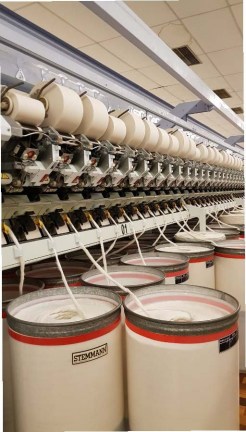
Travelling through Brazil you quickly realise that nothing is close. Our next stop was Porto Alegre in the southern state of Rio Grande Do Sul. Here we were given the opportunity to visit a factory which is processing citrus to create essential oils, as well as visiting a biogas facility which receives 6000 tonnes of waste per week and is producing about 1200 cubic metres of biomethane per day.
A last minute itinerary change meant that our group was able to take the opportunity to visit the Inguazu Falls which are located on the border between Brazil and Argentina, and at any one time can have between about 150 and 300 waterfalls depending on the water flow. Our visit here was amazing, and a once in a life time opportunity, that none of our group wanted to pass up.
Our last stop in Brazil was Sau Paulo, a city of 20 Million people on the eastern coast of Brazil. The highlight for me during our time in Sau Paulo was the opportunity to visit the Centre for Rehabilitation, Education and Nutrition. This is an educational outreach centre focused on dealing with children with nutritional challenges, including severe malnutrition and obesity. The centre is located in a large slum area of Sau Paulo, and the small number of children and families that the centre is able to reach appear to be benefiting from the work that they do.
It was incredible to be able to play with these children, and gain a deeper insight into the importance of food especially for those whom food is more of a luxury than a necessity. For many in our group, our visit here provided an opportunity to check in with the reality many people in the world face, but it was so great to be able to see a community initiative having benefits albeit to only a small number of people in need.
New Zealand
7 weeks after leaving home, I was finally on the last leg of my travels, New Zealand bound with 9 other scholars, many of whom had not previously been to New Zealand.
After an early arrival into Auckland, we were off to Hamilton, where we had the opportunity to meet with LIC and Dairy NZ at Ruakura. Whilst unfortunately we were unable to get out onto the farm itself due to the fact we had just arrived from South America. It was great to see biosecurity protocols in place as the need to protect New Zealand (and Australia) from pest and disease incursions was something that had had much debate in our group.
Those with links to the dairy industry were certainly impressed with the knowledge that was shared with us during our visit in Hamilton.
Taupo was our next destintation. We were given an amazing opportunity to gain some understanding of New Zealand Maori Agri-business with a visit to Opepe Farm Trust, which is located on the Napier -Taupo Road. Understanding the challenges that a multi-owner farming trust has to face, and the key drivers in indigenous agriculture was something that the entire group enjoyed learning about.
A few days down time in Taupo was definitely needed at this point after being on the road for so long. A highlight of this being the ability for everyone to take out some of their pent up frustrations with a round of paint ball and some golf!
Early on Sunday morning we packed our bags for a road trip to Hawkes Bay via Ngamatea Station. The beauty of Ngamatea Station is characterised by its isolation. 80,000 hectares of farm land, of which only about 50% of which is effective area. A tough farming environment in the high country tussock land. Ren Apatu our host was very open in sharing his vision for the property, and how they were looking to make ongoing changes to ensure the sustainability of the farm for the next generation.
Despite our best efforts to run out of fuel on the Gentle Annie Road, we managed to make it to Hastings for a refill of gas just in time. Our final stop was Hawkes Bay where we were very kindly hosted by 2016 scholars Sam Land and Tom Skerman. Sam had arranged for us to stay at the stunning Mangarara Eco Lodge. Here Sam shared both his experience during his Nuffield journey, but also shared the story of regenerative agriculture that is being undertaken at Mangarara Farm.
An opportunity to visit both Drumpeel Farm (cropping) and to learn about both Horticulture and Viticulture here in New Zealand was a great way to finish our GFP. The challenges that farmers are facing here in New Zealand, in terms of ongoing regulation, and challenges around the ‘social licence to operate’ gave an interesting insight into farming in a New Zealand context.
It was also great to be able to quantify the challenges that New Zealand will continue to face in the future, particularly in terms of biosecurity which is something that the Horticulture Sector in particular is very concerned about.
When I reflect on my six week GFP, I am reminded of the many similarities that agriculture has throughout the world, but at the same time the contrast in issues that agriculture faces are also significant.
Finally, something I wasn’t fully cognisant of prior to commencing the Nuffield journey is the hospitality shown towards scholars, the time people are prepared to give and the doors that have been opened.
Without the hours of organisation that go into preparing for our trip by Nuffield, but also the time given by both work and most importantly our families, this opportunity would not be possible.
